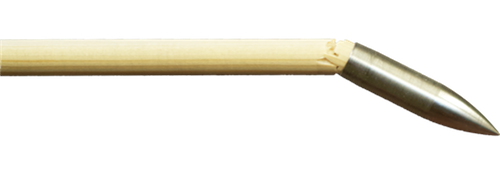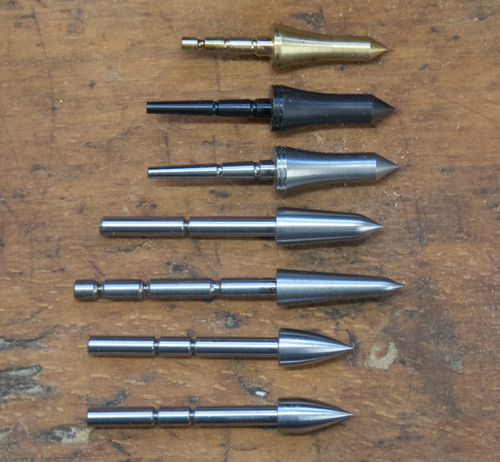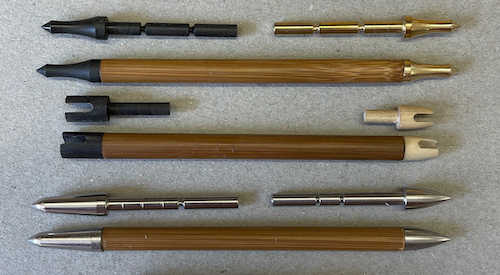Tang Points
In former times tang points were drilled or burnt into wooden shafts. In river cane or bamboo shafts they were just plugged into the hollow culm.
Oetzi, the iceman did it 5000 years ago as well as other users of bamboo arrows all over the world.
Bamboo arrows are predestined to use tang points.
Arrow Fracture
A wooden arrow with a glue-on field point often breaks just after the end of the point after having hit a hard object slantways.
Favored is this by the fact that the end of the glue-on field point works like a knive's edge (notch effect) on the shaft.
Advantages of Tang Points:
- It is easy to make the centric bore into a bamboo shaft, hardwood footing or a wooden shaft for the tang point. The T-Tip drill bit with the Arrow-Fix Tool or the Drill Guide work just great for that.
- Tang points reduce the risk of arrow fracture in the front because no notch effect will be caused.
- One diameter of tang point can be used for several shaft diameters. The shaft can be easily tapered to fit the tang point.
- For lighter wooden shafts or bamboo shafts there are in addition to the point diameters 7.7mm (5/16") also the diameters 7.5mm. 9/32 (7,14mm) and 7.0mm (like 9/32") available.
- Some of our field points are Break-Off field points to be able to adjust the weight of the point from 125 grain down to 80 grains or 60 grains.
- One of the Break-Off points works also as a broadhead adapter. Combined with the Blitz-Broadhead the total weight of the broadhead can be adjusted from 325 grains - 350 grains
- The weight range of the points is 60 grains - 125 grains.





